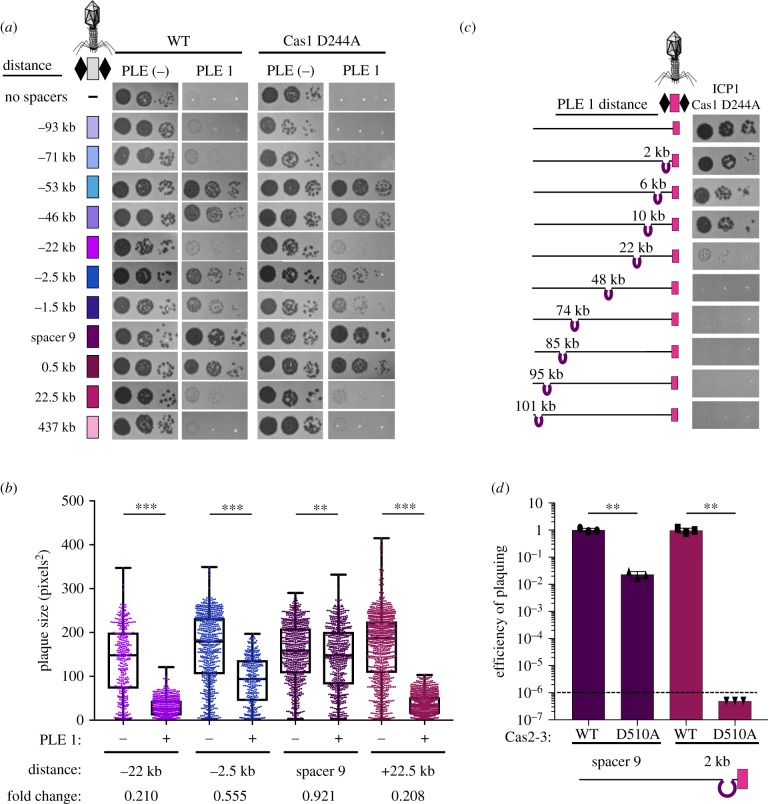Figure 6.
The interference potential of spacers directed to the small chromosome is dependent on the proximity to PLE. (a) Tenfold dilutions of ICP1 engineered with a spacer that targets the small chromosome or PLE 1 +/− Cas1 spotted on lawns of V. cholerae showing the ability of different phage strains to form plaques. Spacer 9 is the same as spacer 9 in ICP1_2011_A. The distance of the chromosomal protospacer from the PLE 1 integration site is indicated. (b) Plaque size of ICP1 variants plated with V. cholerae. The distance and colour scheme correspond to the spacers tested in (a). The fold change in average size of a plaque on a PLE (+) host compared to a PLE (−) host is indicated at the bottom. Significance was determined by Mann–Whitney U-test, **p < 0.005, ***p < 0.0001. (c) Tenfold dilutions of ICP1 engineered with a chromosomal protospacer spotted on lawns of V. cholerae harbouring PLE in different locations in the small chromosome. (d) Efficiency of plaquing of phage engineered to contain a spacer that is internal to PLE 1 (spacer 9) or targeting the small chromosome 2 kb away from PLE 1 (same as in (c), cartoon below graph) with the WT or helicase dead (D510A) Cas2-3 allele. The dashed line indicates the limit of detection. Significance was determined by T-test, **p < 0.005.

